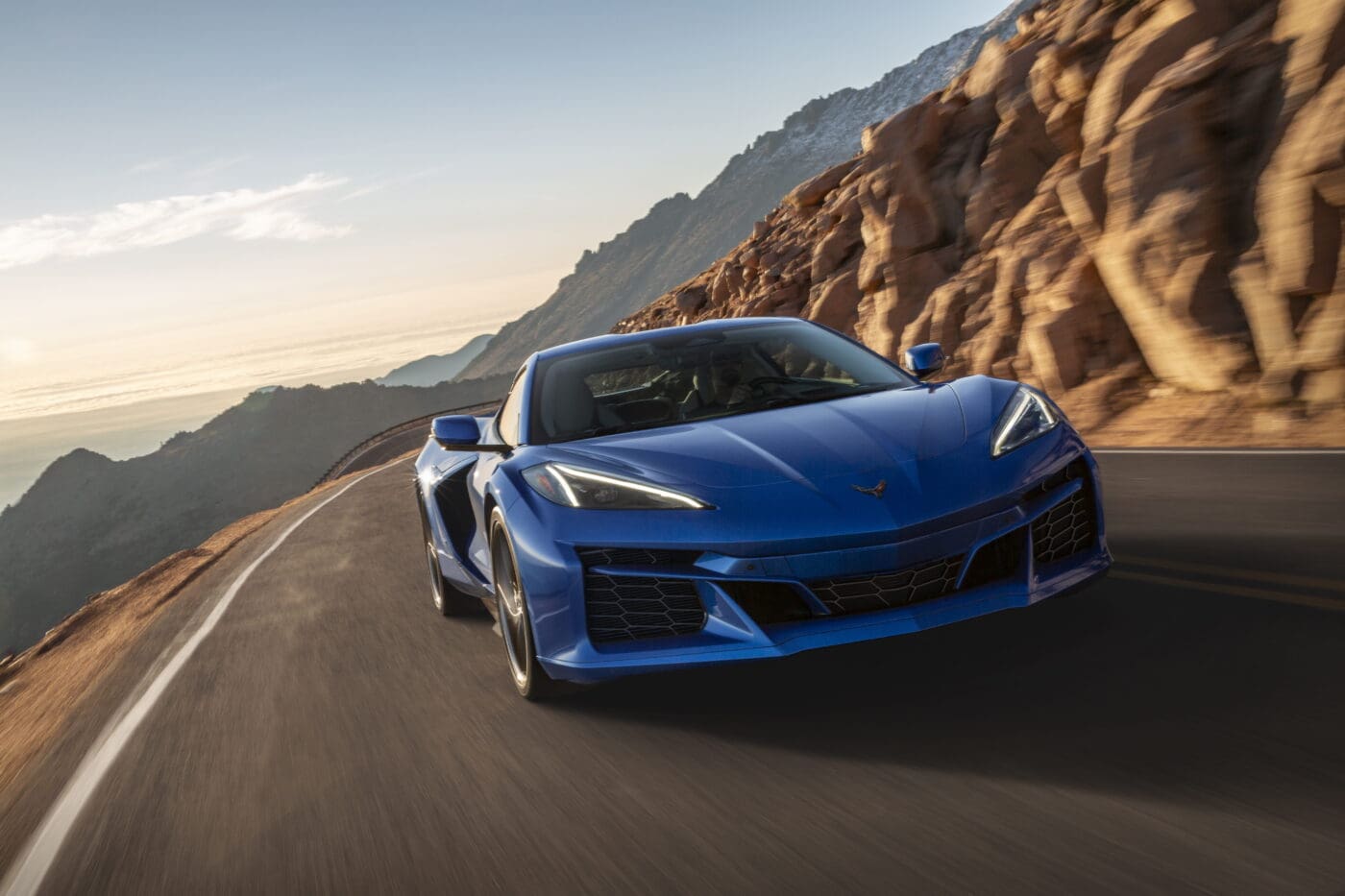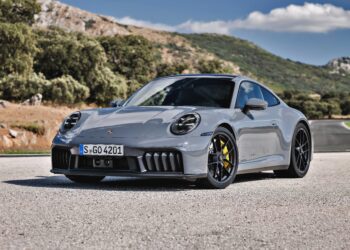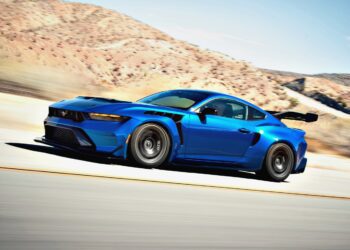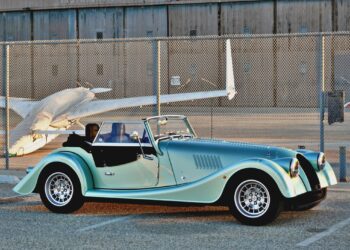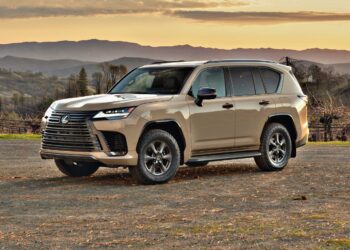I’m standing in the middle of a massive hangar at a small airport just south of Denver, CO. Colorful single-engine propeller planes sit scattered within its towering walls as its impeccably glossy white floors reflect the afternoon sun. To my right sits a Stingray, and to my left, a Z06, with a row of E-Rays lined up just outside the building’s enormous doors.
The full Corvette range is in attendance, and before I even set foot in the new car, I’m wondering where it fits. The Stingray has already proven itself to be a formidable sports car at the entry-level, while the Z06 sits above it as a pricier supercar fighter. Who, then, is the E-Ray for?
Ask Tadge Juechter, the Corvette’s Executive Chief Engineer, and he’ll tell you the E-Ray is for an entirely different kind of customer. An E-Ray buyer doesn’t save their sports car for special occasions, nor do they chase lap times at a track. They’re Porsche and Mercedes-AMG fans, the kinds of people who want a year-round one-car solution that’s appropriately sporty but usable.
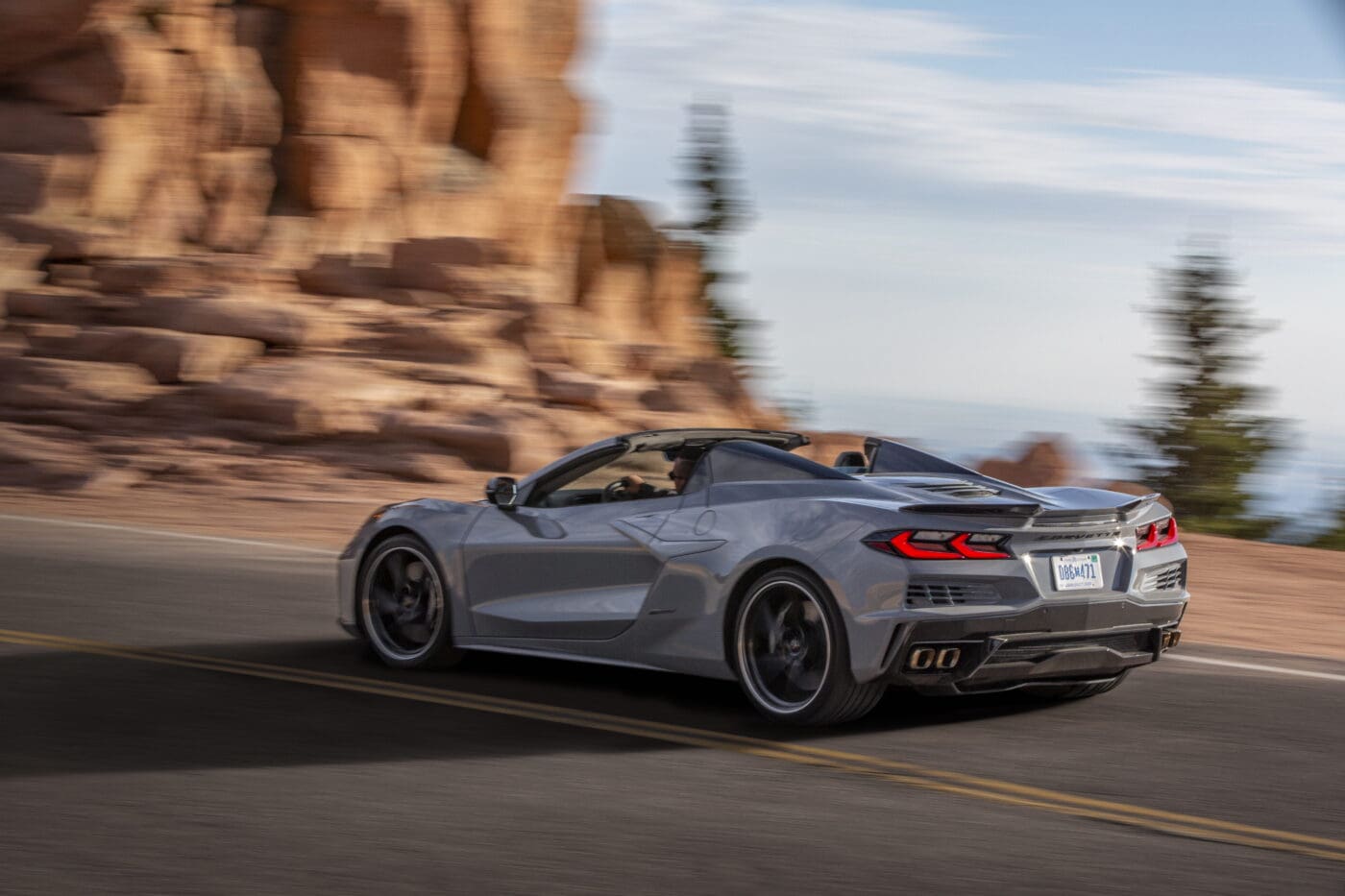
On paper, the C8 generation Corvette seems like the right car for the job. For starters, it’s already practical with its large front and rear storage compartments, while its magnetic dampers make it one of the most comfortable sports cars on sale. Its biggest challenge then is the year-round usability part, which the E-Ray aims to solve with a 160-horsepower electric motor, making it the first hybrid Vette ever, the quickest to 60, and the first to send power to all four wheels.
Juechter quickly made one thing clear. The E-Ray’s electric motor is there purely for performance, not efficiency. Although it allows for all-electric cruising up to five miles with a 45 mph top speed, its primary goal is to produce power and provide greater traction. As such, the E-Ray’s fuel economy ratings of 16 mpg in the city, 24 on the highway, and 19 combined match the Stingray’s.
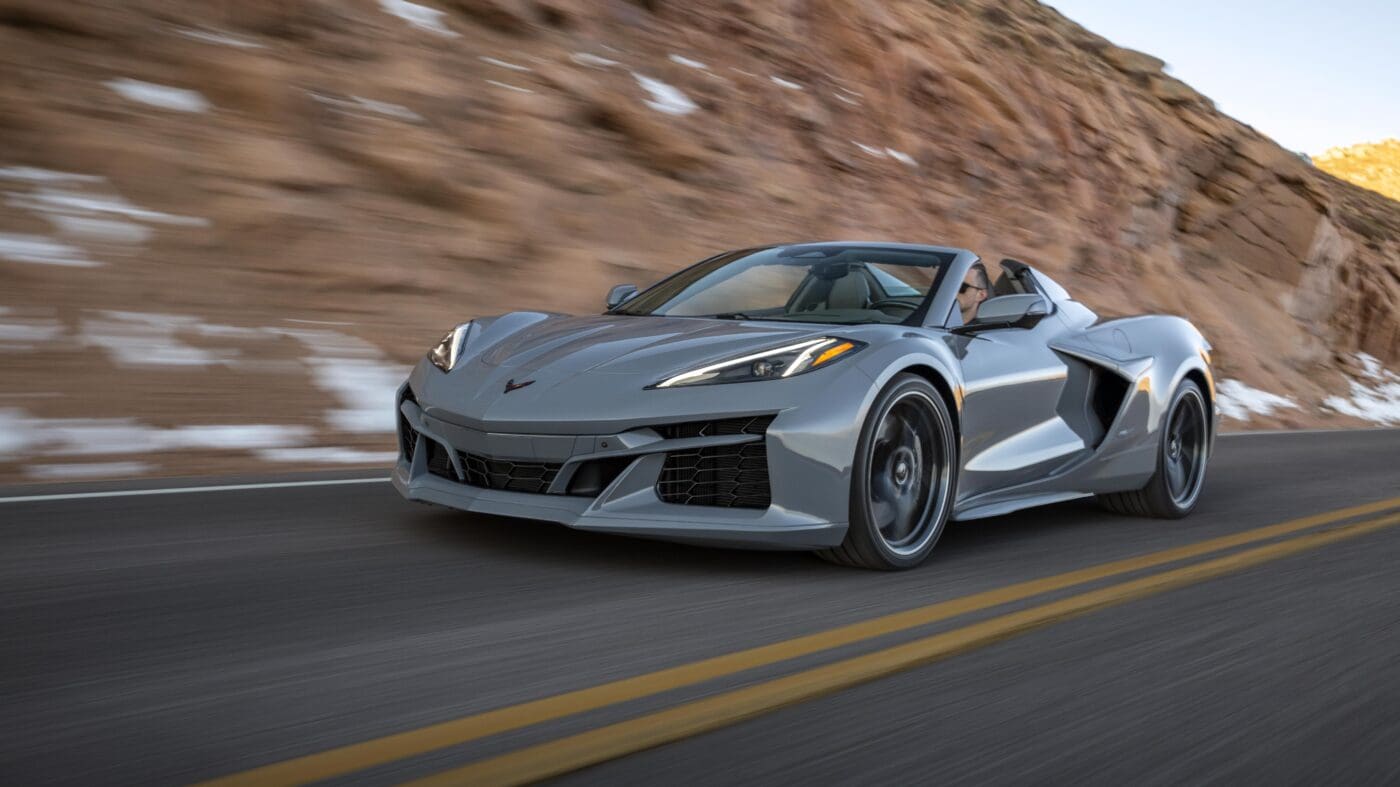
Its primary power source is the same 6.2-liter naturally-aspirated LT2 V8 you’ll find in the Stingray, developing an identical 495 hp and 470 pound-feet of torque. With an all-new electric motor up front, it delivers a total system output of 655 hp. And if, at this point, you’re asking why didn’t Chevy call on the Z06’s high-revving LT6, the answer is simple: cooling.
A small-block V8 will always need less cooling than a high-strung screamer, and thus, given this car’s application, the LT2 made the most sense. With 655 hp on tap and all-wheel drive, the E-Ray still rips to 60 mph in 2.5 seconds, making it the quickest Vette ever, beating out the Z06 by a tenth of a second. And while it’ll run the quarter mile in 10.5 seconds, its top speed is no faster than a Stingray’s due to its electric motor disengaging past 150 mph.
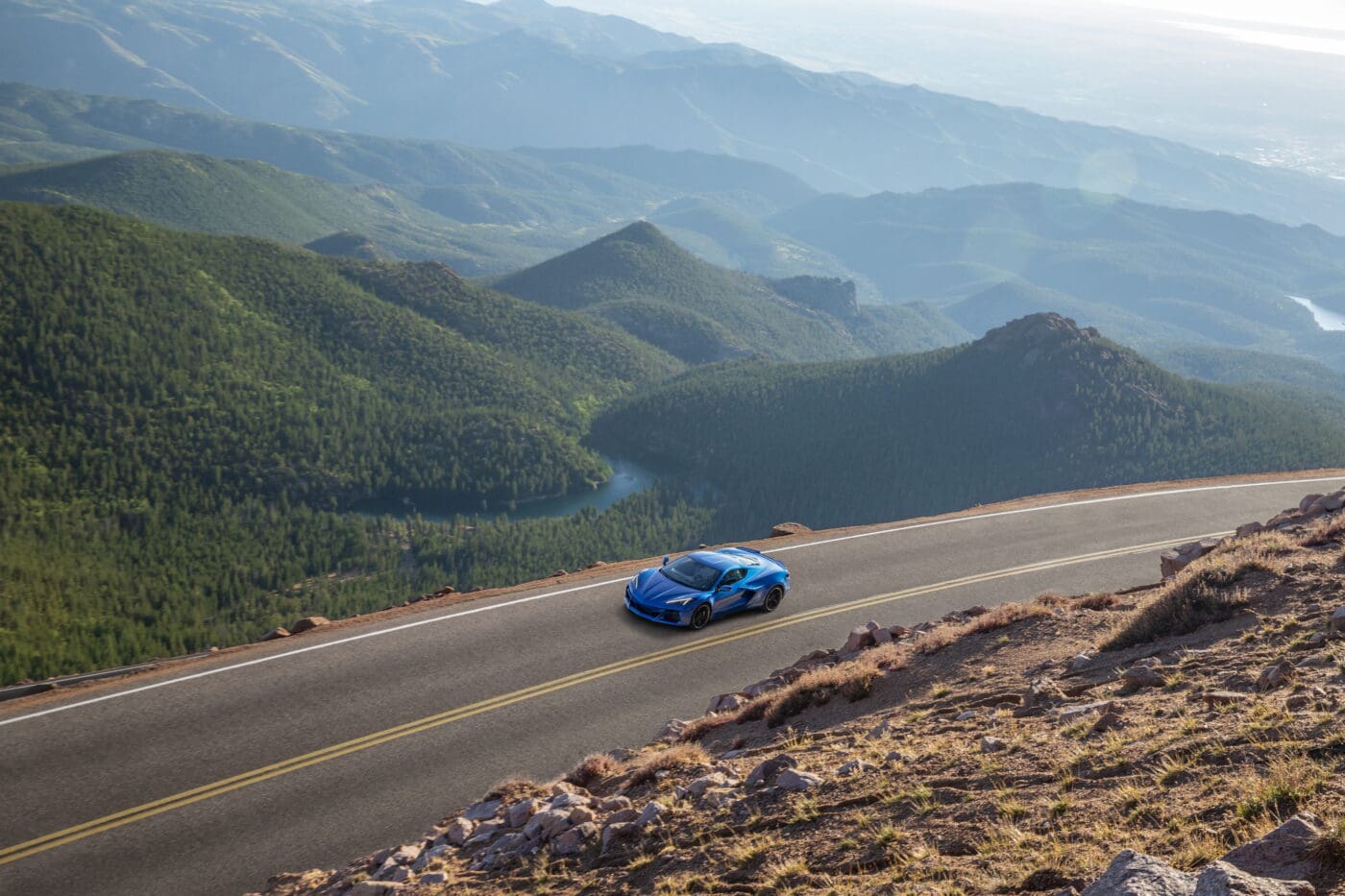
The E-Ray’s V8 and electric motor are pretty conventional in isolation. Still, their relationship, or lack thereof, makes this Vette more unique than other mid-engined hybrids like the McLaren Artura or Ferrari 296 GTB. Whereas its exotic competitors wedge an axial-flux motor between their engines and transmissions, the Corvette’s power sources function independently, linked only by software.
Chevy’s new eAWD system allows the E-Ray to scan the road surface ahead and send power to the front wheels when needed, either in low traction situations or during a quick drive on a back road. The front motor can disengage completely when cruising or when it’s not needed.
It’s unique to the E-Ray and small enough not to affect the size of its front storage compartment. Its battery, a 1.9-kilowatt-hour pack with a 1.1 kWh usable capacity, sits between the driver and passenger below the car’s center console. Its placement ensures the E-Ray retains a low center of gravity while handling structural loads, aiding its rigidity.
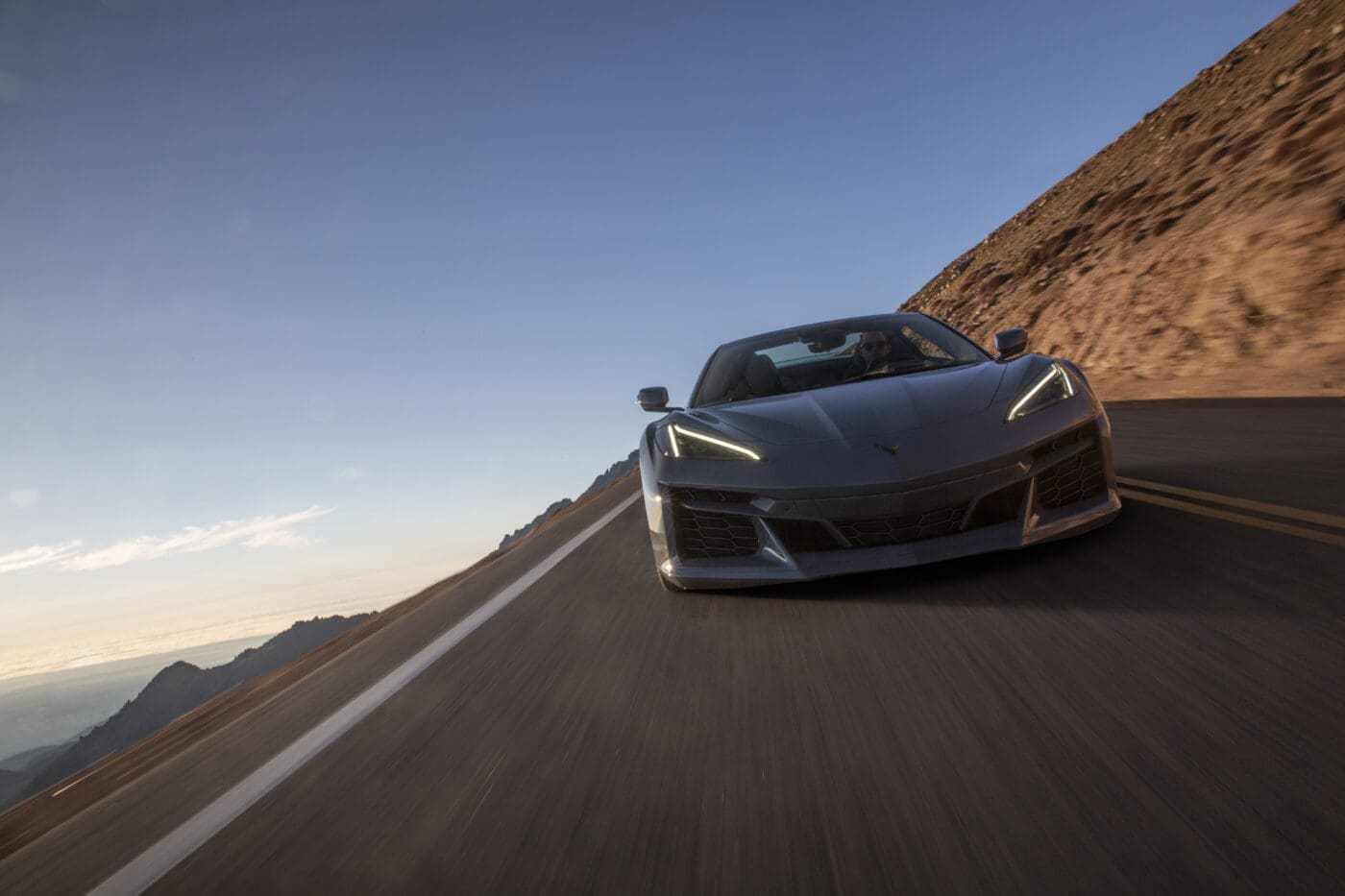
I grabbed the keys to a Cacti Green convertible and set off, quickly leaving the large hangar behind in search of twisty mountain roads. At cruising speeds on large stretches of highway with its front motor disengaged, the only tell-tale sign you’re in an E-Ray at all is its suspension. The electrified Vette comes standard with Magnetic Ride Control and employs far softer spring rates than the Z06, allowing it to retain its plush ride despite its larger wheels and tires.
Off the highway and in the mountains, however, the difference is clear. The E-Ray bursts out of corners in a way the Stingray could only wish. It’s not even its relentless acceleration that’s most impressive, though. Its front end is tremendously grippy, inspiring you to push it harder. It begs you to enter each new corner slightly quicker than the last, confident you’ll never run out of grip.
Unlike the Z06, the Corvette E-Ray doesn’t have endless revs, topping out at a much lower 6,600 rpm. Its eight-speed dual-clutch auto and closely spaced gears offer solid low-end torque while its front motor backs it up with instant power. And despite their lack of a mechanical connection, the two power sources blend seamlessly.
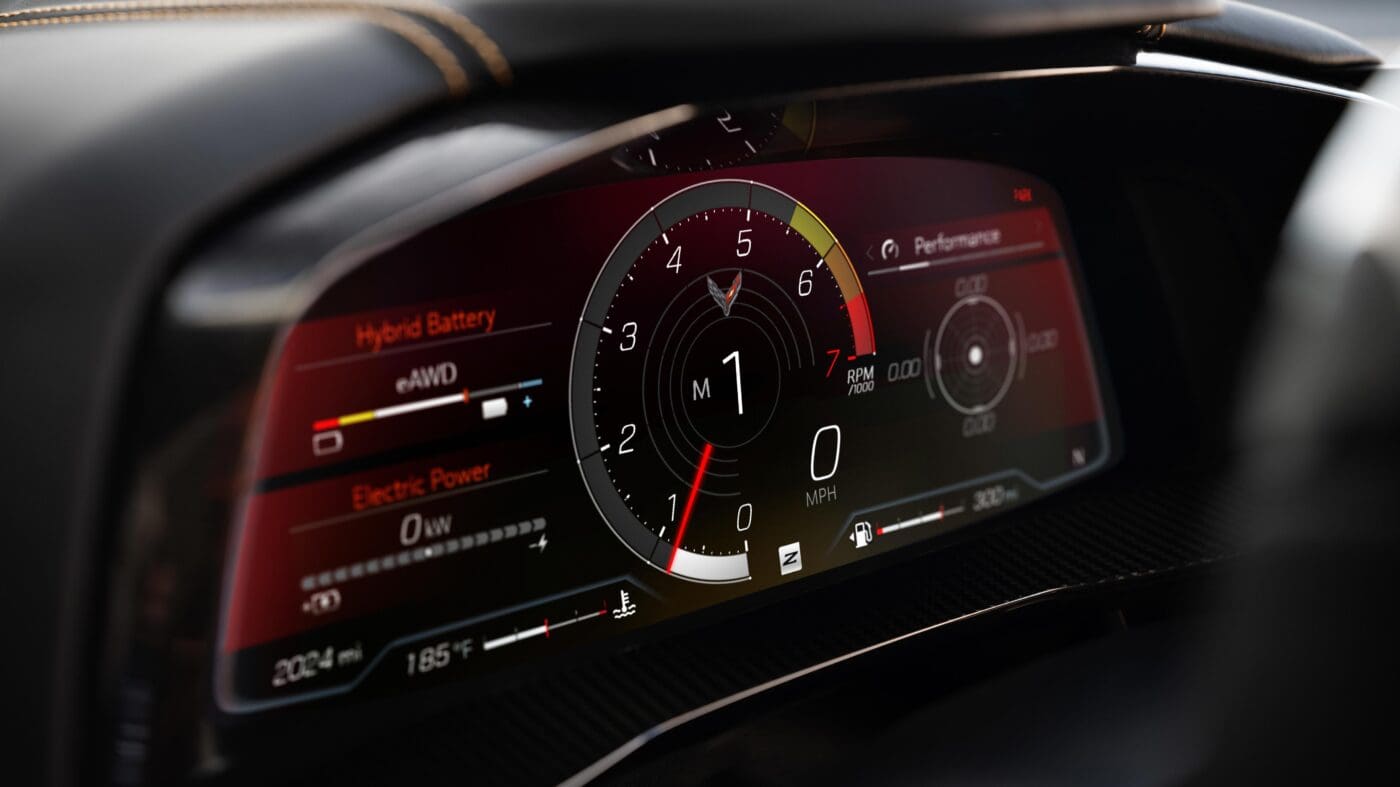
The electrified Vette counts on the same six drive modes as the Stingray: Tour, Sport, Track, Weather, My Mode, and Z-Mode, each affecting its firmness, powertrain response, and traction control system. However, it adds Charge+, which can be enabled to prioritize juicing up its pack or disabled for maximum performance for short bursts.
I moved between them, eventually settling on Track mode despite running it on the street. Thanks to its softer spring rates, the E-Ray is nicely compliant, even in its firmest setting, easily handling bumpy road surfaces. Although far from talkative, its steering is well-weighted and direct, allowing you to point the E-Ray’s front end exactly where you want it to go. And with standard carbon-ceramic brakes, this Vette never runs out of braking performance regardless of how hard it’s pushed.
Given its agility on tight switchbacks, you’d be surprised to learn that the Corvette E-Ray’s electric components add around 200 pounds to its overall weight. My convertible tester’s dry weight comes in at a hefty 3,856 lb, which, once you add in fluids, should easily surpass 4,000 lb. This Vette partially disguises its bulk thanks to its 275/30 and 345/25 section tires, which feature a new sticky Michelin Pilot Sport All-Season tire.
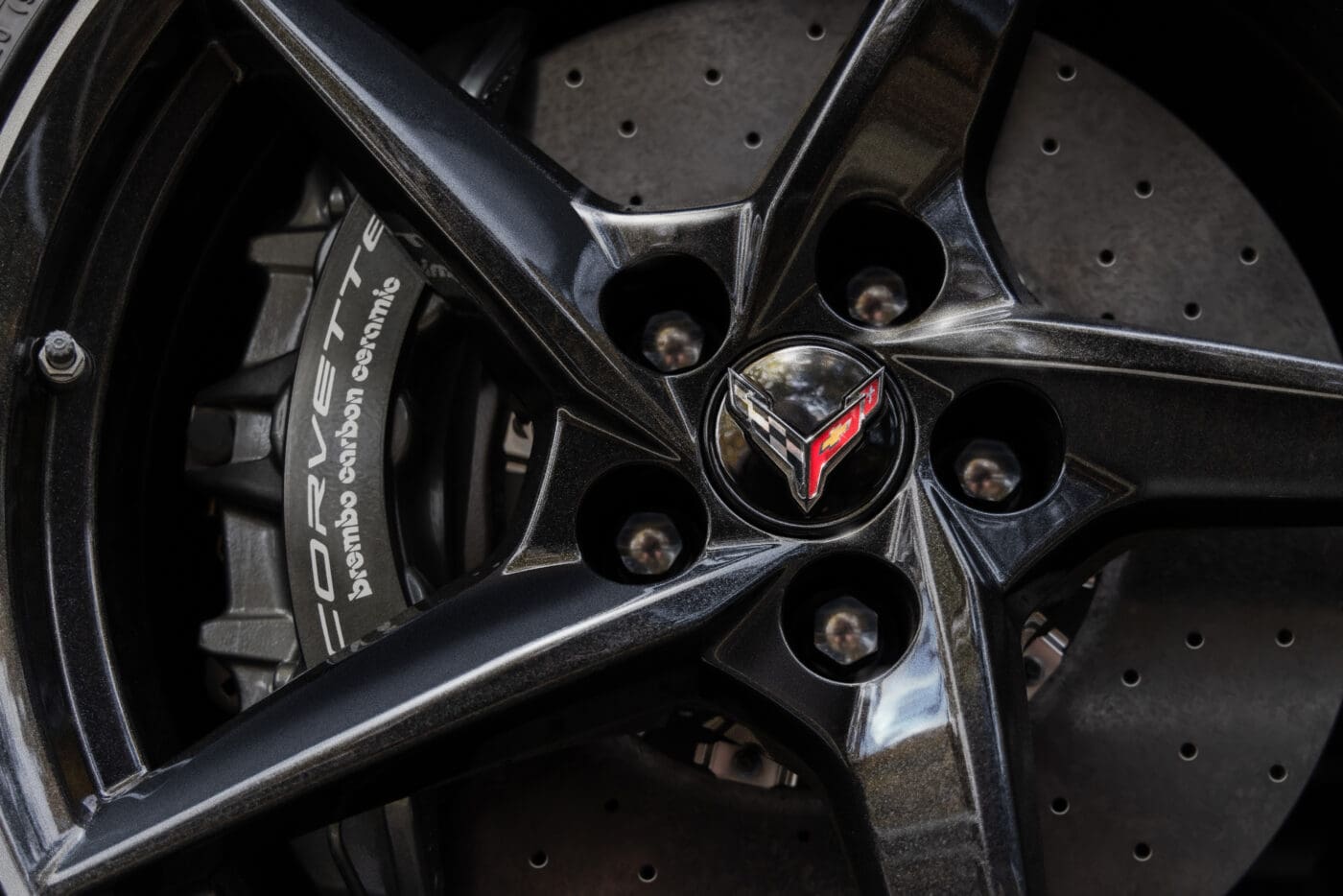
Coupled with its active dampers, the convertible behaves no differently on the street than an equivalent couple. However, with the push of a button, its top quickly retracts, giving its burbly V8 easy access to your ears. Chevy blends its note with a synthetic sound to remind you of the electric motor’s presence, and despite being slightly futuristic, it aligns nicely with the small block’s throaty song.
As I pointed the Vette’s nose east towards my overnight stay in downtown Denver, I settled in for an hour of traffic and began to poke around the E-Ray’s interior. And although it sports a new Artemis dark gray color, it essentially carries over from other C8 models, as do its three-seat choices. My tester’s configuration was nearly perfect, with only its extensive use of carbon fiber clashing with the classiness of its leather’s darker finish.
Its digital instrument cluster sports updated layouts to showcase its charge levels and consumption. At the same time, its suite of safety systems now features lane keep assist, lane departure warning, front-collision alert, and automatic emergency braking as standard, features you could do without in a weekend warrior but are essential in a daily driver.
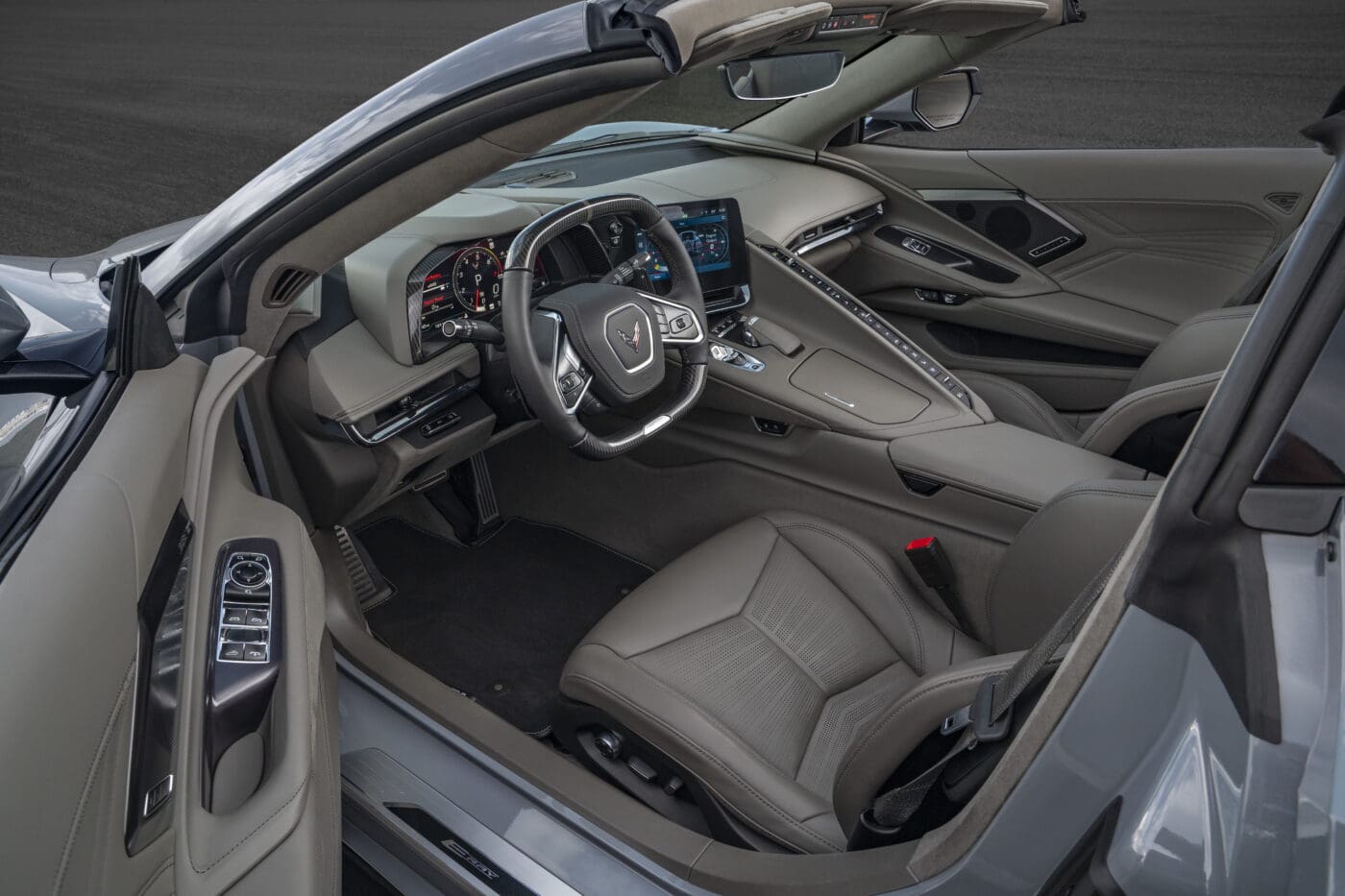
As I worked through rush hour traffic in search of my hotel, with the Vette set to its cushiest setting and its transmission shifting automatically, I experienced the other side of the Corvette E-Ray’s dual-persona. Despite offering on-road performance similar to the track-ready Z06, it’s as usable as a Stingray, offering up performance when you want it and comfort when you don’t.
Day two began early at Pikes Peak International Raceway, a track whose rough surface and tight bends play well with the Corvette E-Ray’s softer suspension and added traction. I was in the first group of journalists to go onto the short circuit led by a pro driver in one of Chevy’s development cars.
A handful of laps with Charge+ engaged allowed me to juice up the car’s battery while quickly learning the short and tight circuit. It wasn’t long before I could switch off the regenerative mode and engage the maximum discharge setting for back-to-back hot laps.
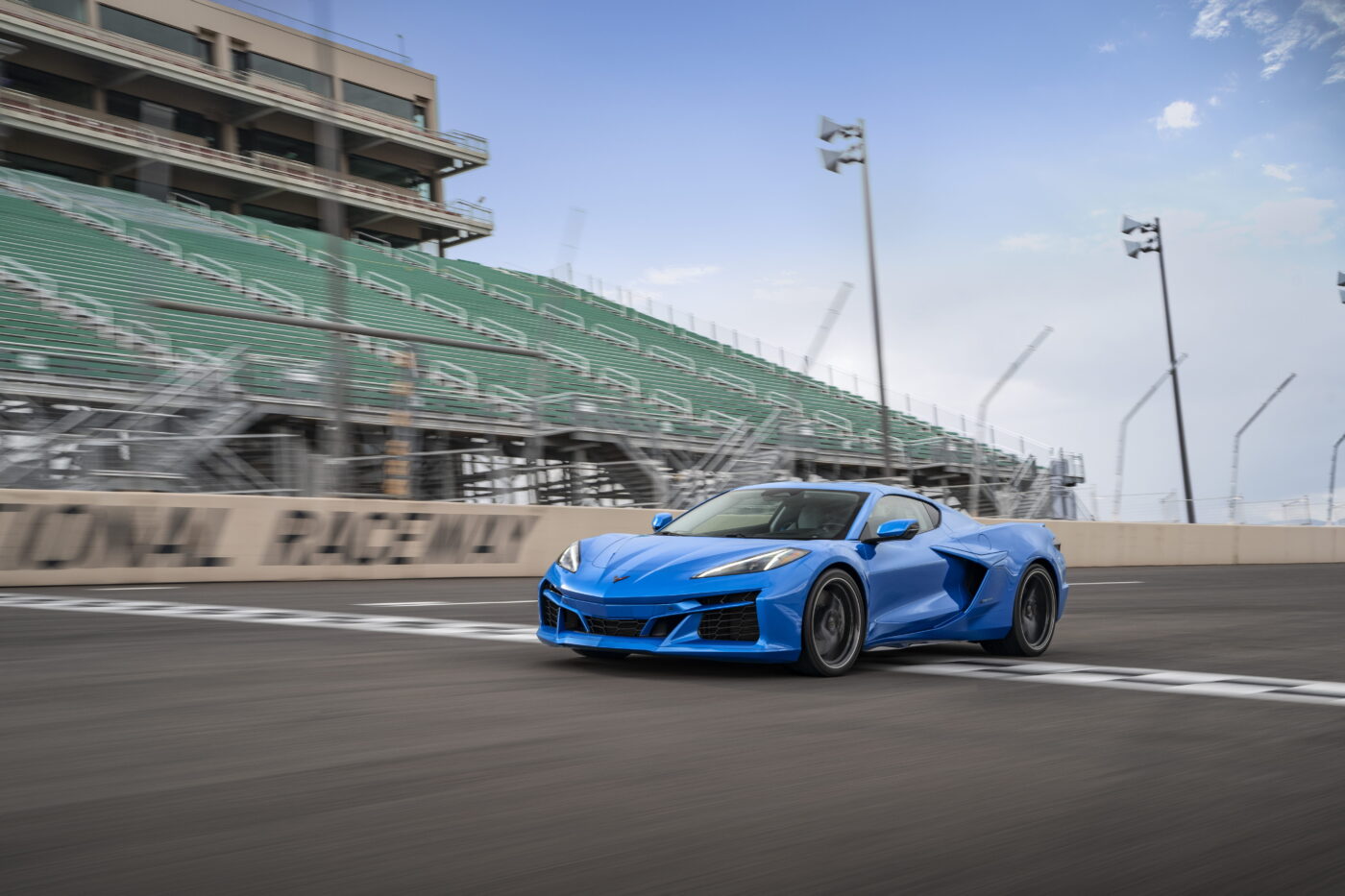
The speed difference is extraordinary. With its front motor fully topped up, the E-Ray is significantly quicker than when it’s focused on harnessing energy. I felt myself entering corners quicker, braking later, and searching for its limits. Like the day prior in the mountains, the electrified Vette had endless grip on offer and instant bursts of acceleration to shoot you out of bends and onto one of the track’s short straightaways.
Its added front-end grip, coupled with the quickness of its steering, grants the E-Ray agility a car weighing in close to 4,000 lb shouldn’t possess. It’s nimble but perfectly stable, even under hard braking zones. It always goes precisely where you point it to. Dial back its traction control, and its tail will come around, although you’ll have to induce this behavior given its high grip levels.
It’s not long before I’m back at the pits, watching the next group of drivers go out. I hang around to see the E-Ray in motion, glued to the track’s quickest section, a spot I had blasted past minutes earlier deep into triple-digit speeds. Like the Z06, the E-Ray is low-slung and exceptionally wide, 3.6 inches more overall than a Stingray. However, its use of body-colored panels, rather than contrasting elements finished in gloss black, set it apart.
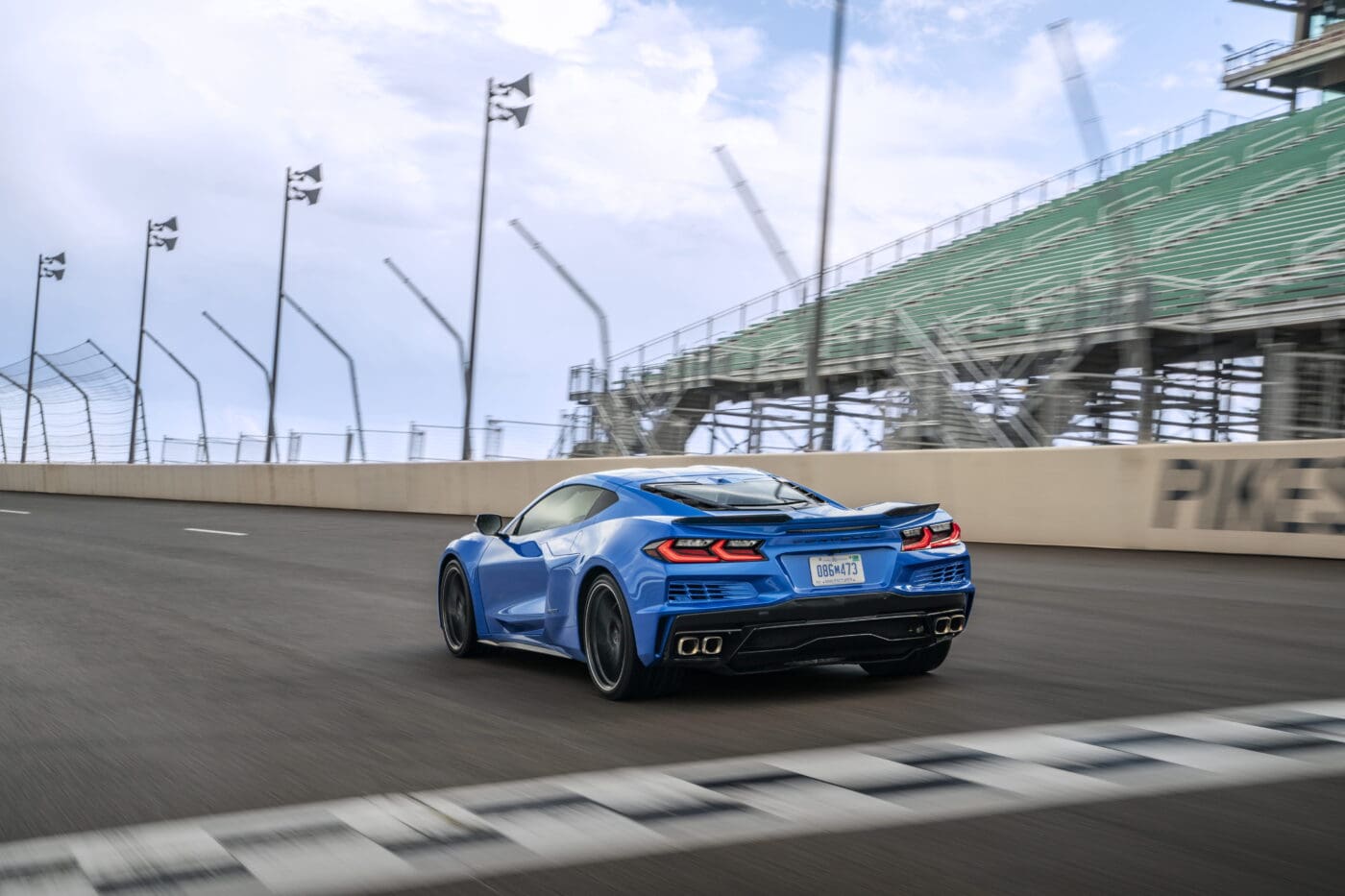
I’ve never been the biggest fan of the Stingray’s styling, even many years after its release. Although the E-Ray’s widened bodywork smooths out its sharp edges and improves its road presence, it’s still not quite as elegant as an equivalent Porsche or a Mercedes-AMG. Its body-colored panels and new color options like the tasteful Cacti Green push it in the right direction, coming across as slightly more refined than the flashy Z06.
Its aero elements, although comparatively subtle compared to its track-ready sibling’s, still generate up to 369 lb of downforce thanks in large part to its rear wickers. A larger front splitter is available through an optional performance package, as are the Z06’s carbon-fiber wheels. Although, I’d stick with the Corvette E-Ray’s trim-specific set for the most balanced look.
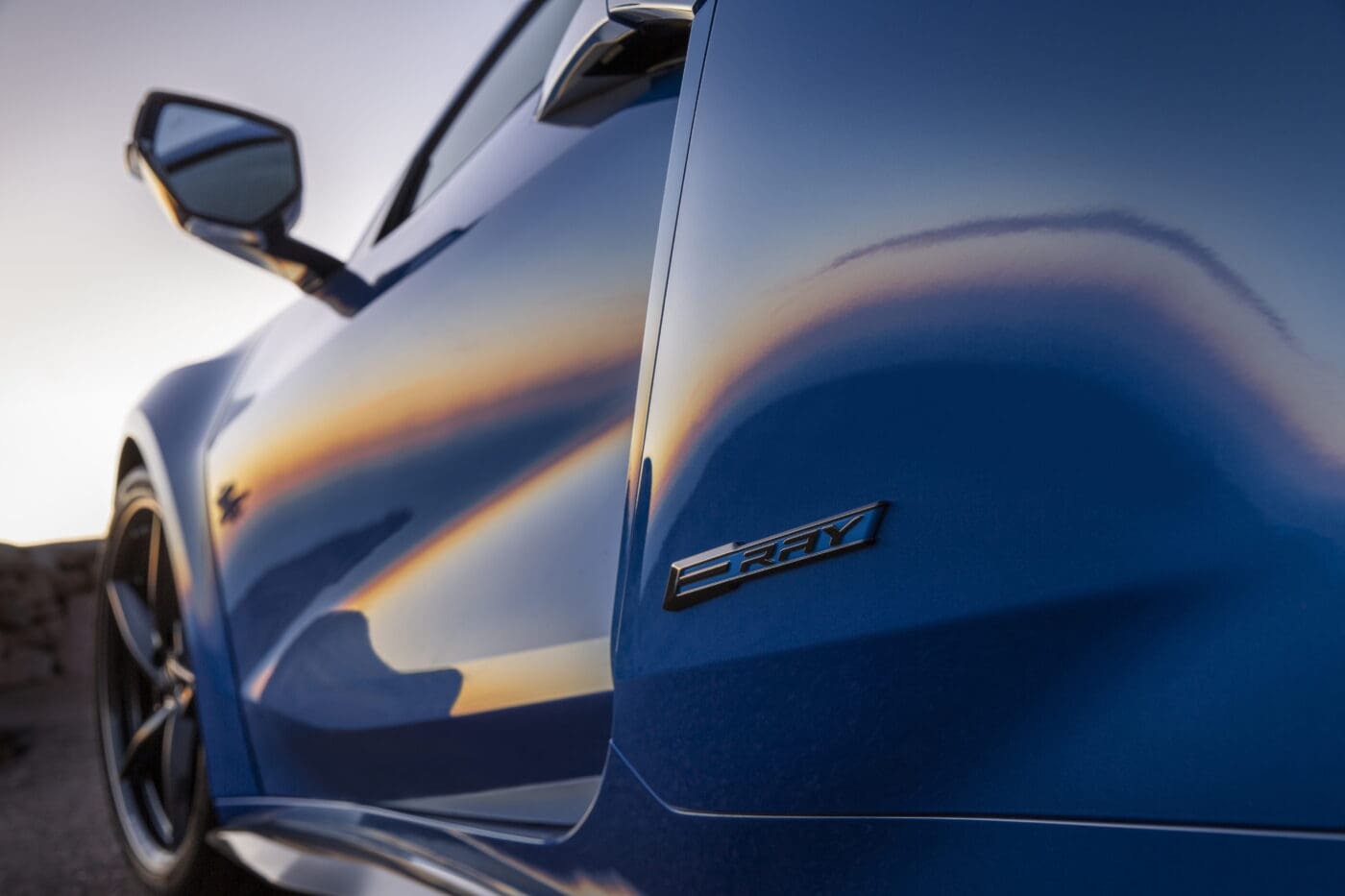
As my day at the track ended and it was time to board a bus for a lengthy ride back to the airport, I reflected not only on the E-Ray’s performance but also its value. It starts at $106,595, including a $1,695 destination fee, yet offers its best features as standard, including magnetic ride control and carbon-ceramic brakes.
My fully loaded convertible tester came in at $134,315, well below what you’d expect to pay for a similarly capable Porsche or Mercedes-AMG. And although the Corvette E-Ray offers substantial value like previous Vettes, that’s not what this car is about.
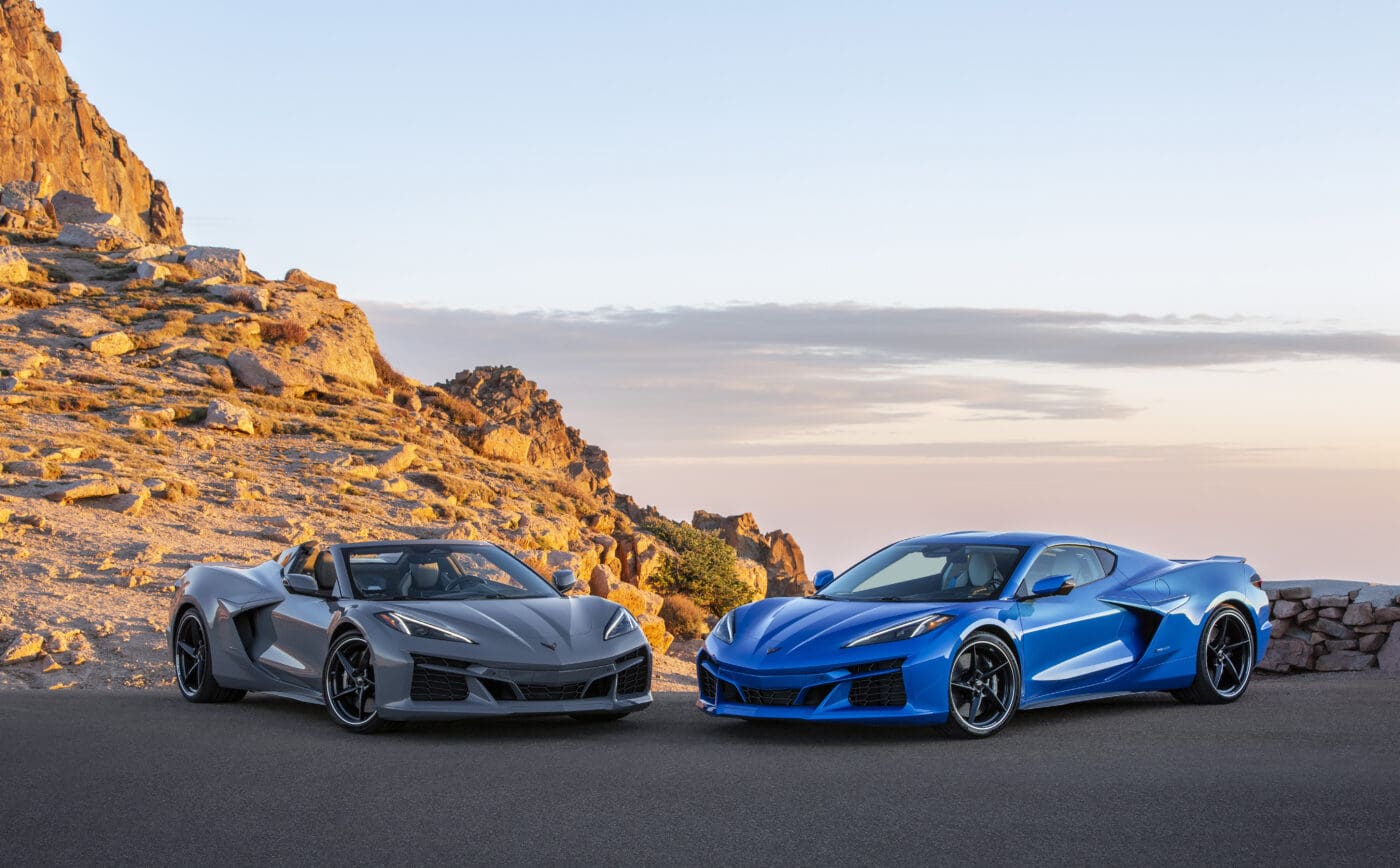
The E-Ray sits neatly between the Stingray and Z06 as a sports car that offers supercar fighting performance on request while remaining perfectly comfortable, practical, and usable for daily life. Despite the Stingray’s formidable performance for the price, its limits are firmly in the sports car realm, and while we’d all like to believe we can tame a Z06, only a handful of us genuinely can.
The Corvette E-Ray fills the gap, serving as a usable sports car on most days that’ll aggressively tackle a back road on command. It achieves what it sets out to do: offer a one-car year-round solution. And although it may not look as classically elegant as its Porsche or Mercedes-AMG, its blend of performance and usability is extraordinary.


